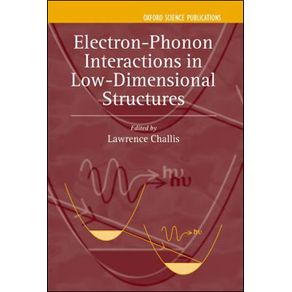The study of electrons and holes confined to two, one and even zero dimensions has uncovered a rich variety of new physics and applications. This book describes the interaction between these confined carriers and the optic and acoustic phonons within and around the confined regions. Phonons provide the principal channel of energy transfer between the carriers and their surroundings and also the main restriction to their room temperature mobility. But they have many other roles; they provide, for example, an essential feature of the operation of the quantum cascade laser. Since their momenta at relevant energies are well matched to those of electrons, they can also be used to probe electronic properties such as the confinement width of 2D electron gases and the dispersion curve of quasiparticles in the fractional quantum Hall effect. The book describes both the physics of the electron-phonon interaction in the different confined systems and the experimental and theoretical techniques that have been used in its investigation. The experimental methods include optical and transport techniques as well as techniques in which phonons are used as the experimental probe. The aim of the book is to provide an up to date review of the physics and its significance in device performance. It is also written to be explanatory and accessible to graduate students and others new to the field.



